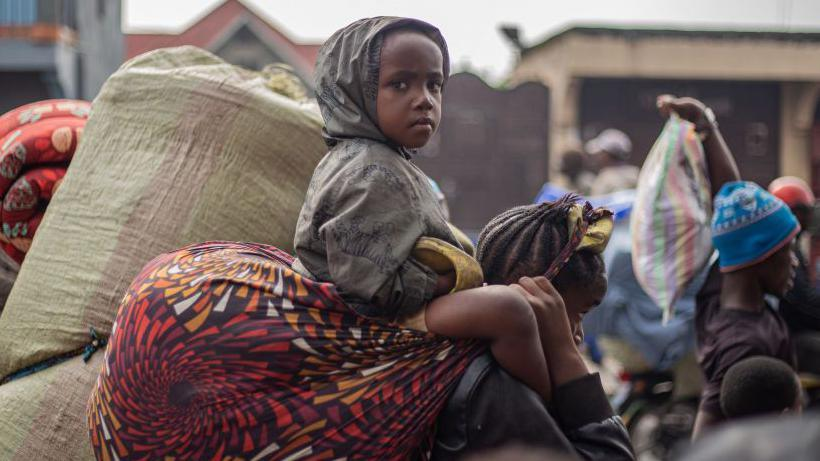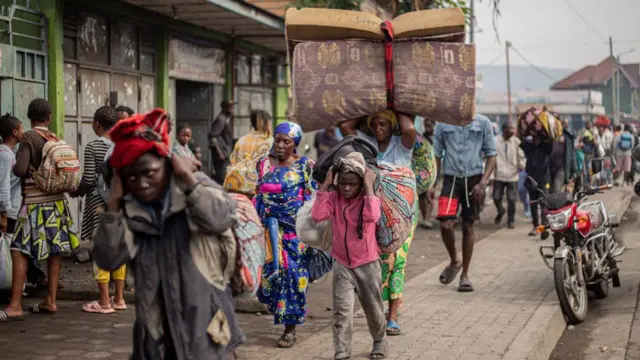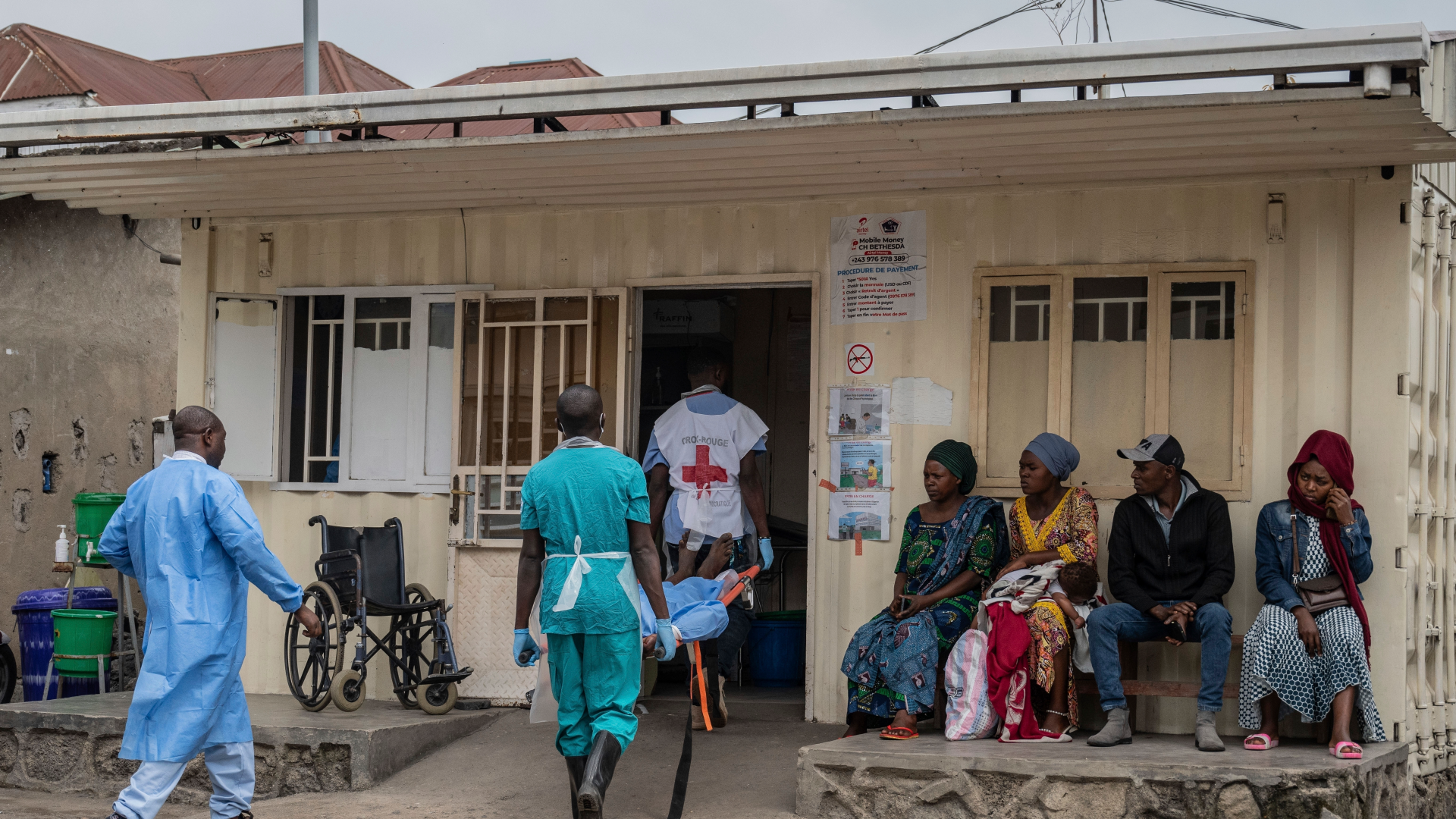The city of Goma in eastern Congo is currently facing one of its darkest periods as heavy explosions and gunfire between Rwanda-backed M23 rebels and pro-government forces have turned the streets into a battlefield.
The escalating violence has caused a massive humanitarian crisis, leaving hospitals overwhelmed, thousands of residents fleeing their homes, and international condemnation growing over the conflict. This marks the largest escalation since 2012, when the M23 rebel group last occupied Goma.
The Humanitarian Crisis Deepens
The situation in Goma has rapidly deteriorated as the city finds itself at the epicenter of intense fighting. Dead bodies now litter the streets, with residents reporting relentless gunfire that has persisted through the nights. Health workers attempting to save lives have found themselves targeted, and hospital patients, including infants, are caught in the crossfire.
Hospitals in Goma are overwhelmed by hundreds of patients with gunshot, mortar, and shrapnel wounds. The World Health Organization (WHO) has described the situation as critical, emphasizing that health facilities are at a breaking point.
Read : 78 Drown After Boat Capsized in Kivu Lake of Congo
“There are currently hundreds of people in hospitals, most admitted with gunshot wounds,” said Adelheid Marschang, WHO’s emergency response coordinator for the Democratic Republic of Congo.
Warehouses storing food and medical supplies have also been looted, further worsening the crisis. The UN’s World Food Programme has raised concerns about food scarcity in the region, warning that the fighting could severely disrupt food supply chains. Families are left scrambling for basic necessities amid the chaos, with little hope of immediate relief.
Protests and International Reactions
As the violence intensifies in Goma, anger has erupted in the Congolese capital, Kinshasa. Protesters have taken to the streets, targeting embassies they believe are complicit in Rwanda’s alleged involvement in the conflict.
The Rwandan embassy, along with embassies of France, the US, Belgium, Uganda, Kenya, and the Netherlands, has faced the brunt of the demonstrations. Protesters burned tires, chanted anti-Rwandan slogans, and accused foreign powers of turning a blind eye to the plight of the Congolese people.

Joseph Ngoy, one of the protesters, voiced the frustration shared by many: “What Rwanda is doing is with the complicity of France, the US, and Belgium. The Congolese people are fed up. How many times do we have to die?” Police used tear gas to disperse the crowds, and security has been heightened around embassies to prevent further attacks.
The international community has called for an immediate ceasefire, but these appeals have fallen on deaf ears. Rwanda has dismissed demands to withdraw its forces, claiming its security is under threat.
Meanwhile, South African President Cyril Ramaphosa and Rwandan President Paul Kagame have discussed the crisis, agreeing on the urgent need for peace talks. However, critics have accused the South African government of failing to adequately equip its peacekeeping troops, who have suffered significant casualties in the conflict.
The Strategic Importance of Goma
Goma is not just a city under siege—it is a vital humanitarian and trade hub in eastern Congo. It serves as a gateway for the trade of ores like tantalum and tin, which are essential components in electronic devices such as phones and computers. The city’s strategic importance makes it a key target for the M23 rebels, who aim to exert control over the region.

The M23 group, which has a long history of rebellion against the Congolese government, has shown no intention of halting its offensive despite international pressure. In 2012, the rebels briefly occupied Goma, and their return to the city now represents a major setback for the government’s efforts to stabilize the region.
South African peacekeepers have joined Congolese forces in defending the city, but they face significant challenges. Thirteen South African peacekeepers have already lost their lives in the conflict, highlighting the perilous conditions on the ground.
The United Nations peacekeeping mission, which has nearly 11,000 personnel deployed in the region, has described the situation as “chaotic” but remains committed to maintaining its positions.
The residents of Goma are paying the heaviest price. Entire neighborhoods have been abandoned as tens of thousands of people flee their homes in search of safety.
Those who remain live in constant fear, often lying on the ground with their families to avoid stray bullets. The sounds of gunfire and explosions have become a grim backdrop to daily life, with no end to the violence in sight.

